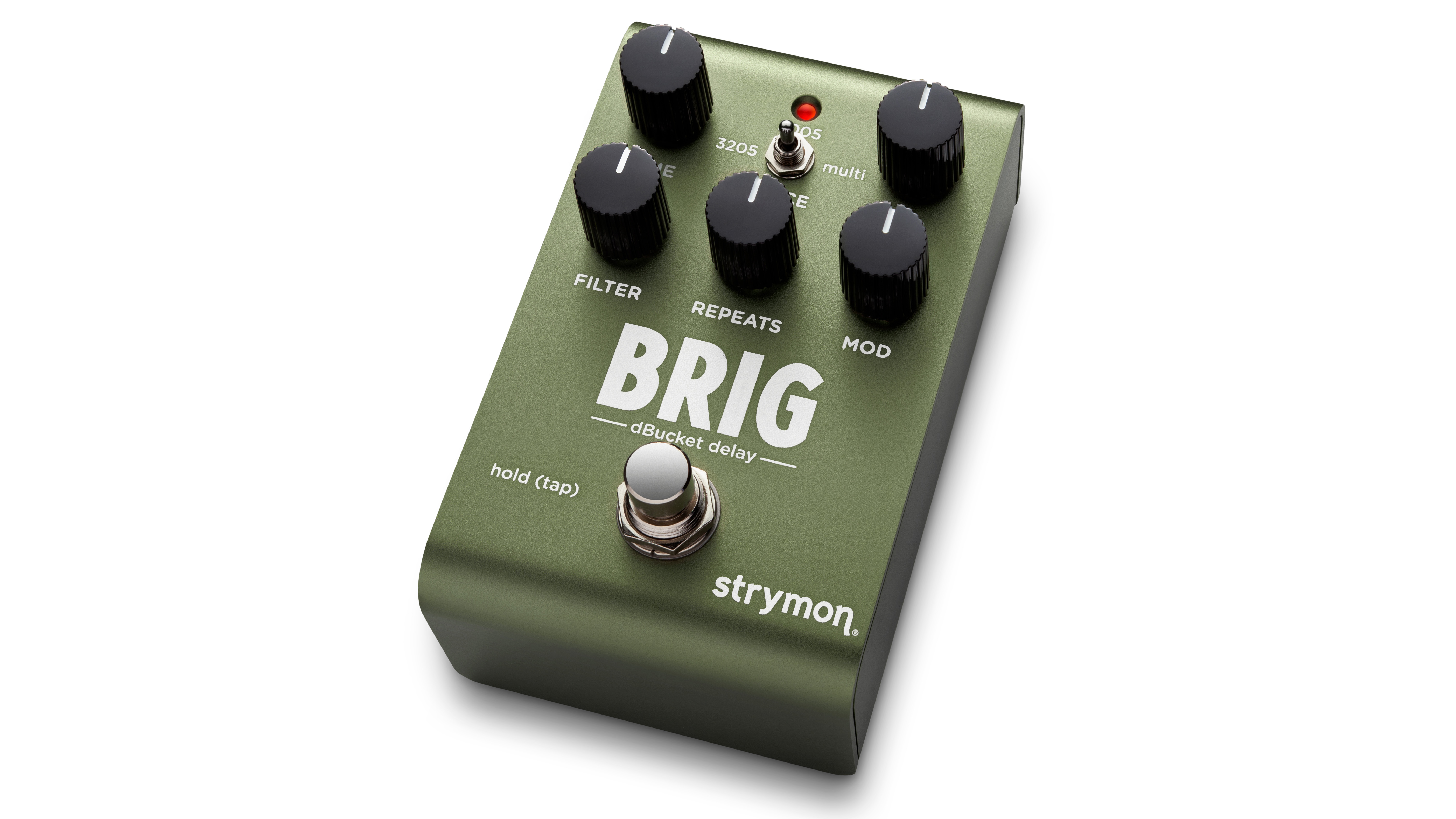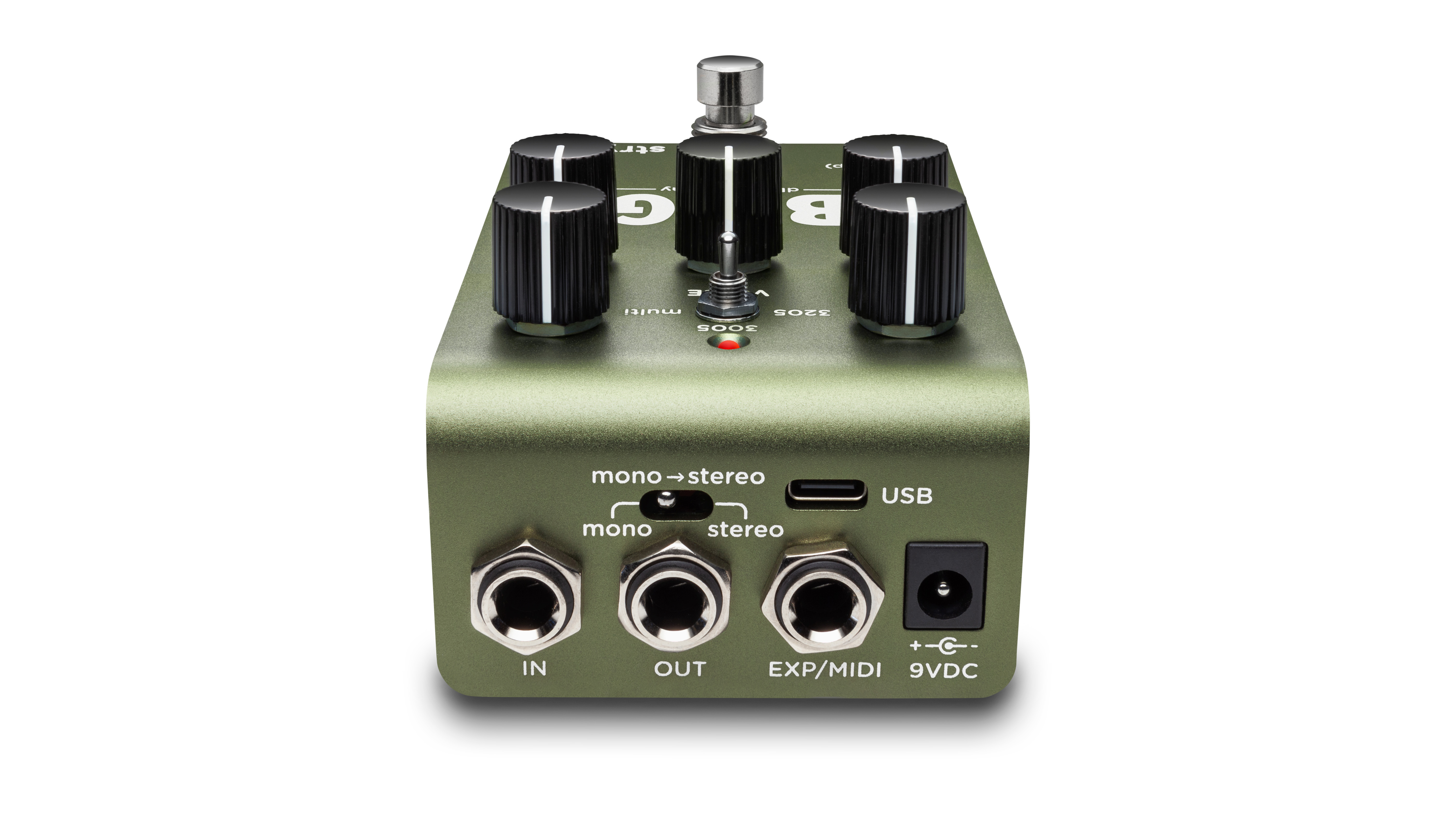
Strymon has revealed its second compact pedal after the highly-acclaimed Cloudburst Ambient Reverb; and the BBD analogue delay-emulating Brig.
A close relative of the Brigadier delay pedal, this feels like more of a genuine compact follow-up than the Cloudburst, which drew from and expanded the BigSky reverb's Cloud mode. But not a cut down version. Brig also comes in the wake of excitement around Boss's DM-101 Delay Machine – a spectacular return to analogue delay for the Japanese company. Now we're about to find out what the digital world can do for it in 2023.
There's no company better placed than Strymon in that regard; its emulations and sheer creative scope for players was ahead of the game by years when it released the Timeline big box delay. But its recent V2 updates of popular reverb and delay units like the BlueSky and El Capistan omitted the Brigadier – now we know why.
The Brig aims to combine everything great about analogue delay, with the enhanced digital processing of the ARM DSP chip from the V2 line and playing response of the ultra-low-noise discrete analogue JFET input circuit. Its three modes like the Brigadier will encourage direct comparison but in place of the older pedal's Long, Medium and Short we now have 3205, 3005 and Multi.

The 3205 voice is named after the BBD chip and delivers "gritty repeats that can morph as it feeds back, creating sounds ranging from gorgeous slapback echoes to psychedelic sci-fi effects." The 3005 voice recreates a dual MN3005 BBD chip circuit to enable longer, dreamier delay times and the Multi voice features 'two cross-coupled, super-clean dBucket delay lines with golden ratio timing to create complex soundscapes and a huge stereo soundfield that remains musical and clean even while sitting on the edge of self-oscillation.' That last one especially sounds like a lot of inspiring fun.
Like the larger, two-footswitch Brigadier, Brig has Time, Repeats, Modulation and Mix controls but features a Filter rather than the larger pedal's Bucket Loss control. The Brig doesn't feature the tap division selector either, but does integrate that into the tap tempo mode you can access via the bypass footswitch . The Time control can then be used to select between triplets, eigths, dotted eighths and quarter notes. Strymon really do make the most of the Brig's smaller dimensions.

As ever with Strymon, the devil we know is in the detail – specifically the the dBucket sound engine here. It's about how Brig emulates and captures the BBD character of degrading notes and the effect of modulation. As the company acknowledges, "The delays that become true classics do not simply repeat the notes you play". But the stereo-out-equipped Brig will address some of the features of traditional BBD analogue delay that are less desirable for many players.
Want all the hottest music and gear news, reviews, deals, features and more, direct to your inbox? Sign up here.

Artifact-free and 'seamless' tap tempo control is one, and we're pleased to see expression pedal (the same one as the MIDI) input to expand the horizons too. Elsewhere, the pedal's Filter controls the 'gentle whisper of noise' that emulates the BBD experience from analogue filtering processes; but it's optional.
The feedback modulation here is specifically voiced according to which of the three modes you select too – Strymon also advises setting 3205 voice to its minimum 30ms delay time and turning up the modulation to act as a BBD chorus pedal. Of course, the ascending chaos of self-oscillation we love with analogue delay is also available.
In addition, the Brig offers the choice or true or buffered bypass, spillover mode, dry signal path modes and even the LED brightness.
The Strymon Brig will be £259.99 / €299.95. More info at Strymon.
We're looking forward to reviewing this one, and you can check out demos below in the meantime.

Rob is the Reviews Editor for GuitarWorld.com and MusicRadar guitars, so spends most of his waking hours (and beyond) thinking about and trying the latest gear while making sure our reviews team is giving you thorough and honest tests of it. He's worked for guitar mags and sites as a writer and editor for nearly 20 years but still winces at the thought of restringing anything with a Floyd Rose.